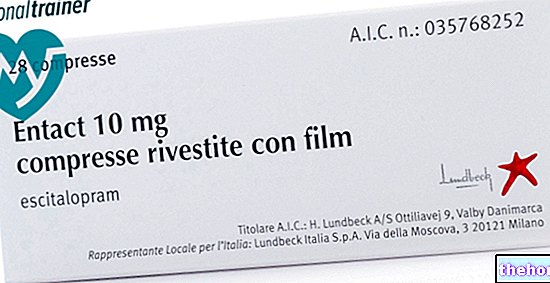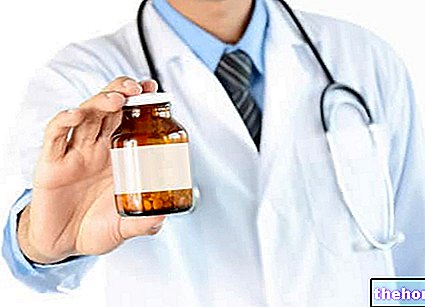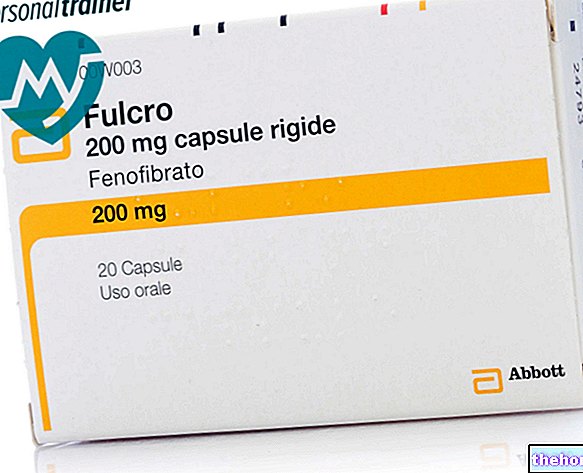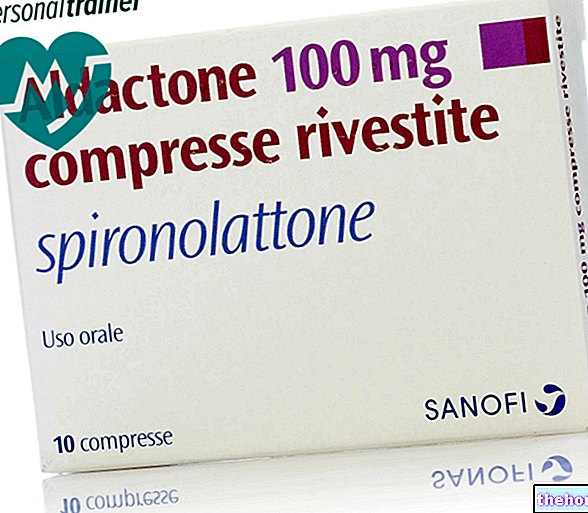Active ingredients: Nystatin
MYCOSTATIN 100,000 IU / ml oral suspension
Why is Mycostatin used? What is it for?
Pharmacotherapeutic group
Intestinal anti-infectives. Antibiotics.
Therapeutic indications
MYCOSTATIN Oral Suspension (ready for use) is indicated in the prevention and treatment of candidiasis (moniliasic) infections of the oral cavity, exogenous and intestinal tract. It also performs an effective prophylaxis against oral candidiasis (thrush) of newborns, especially in those whose mothers had positive cultures of the vaginal secretion.
Contraindications When Mycostatin should not be used
Hypersensitivity to the active substance or to any of the excipients.
Precautions for use What you need to know before taking Mycostatin
MYCOSTATIN should not be used in the treatment of systemic mycoses as its activity is essentially local. In case of irritation or allergy it is recommended to stop the treatment.
The use of diagnostic methods is recommended to confirm the diagnosis of candidiasis and to rule out infections caused by other pathogens.
Information for the patient
- Patients receiving MYCOSTATIN should strictly follow the doctor's prescription.
- If symptoms improve during the first few days of treatment, the patient should not interrupt or suspend treatment until therapy is complete.
- If irritation occurs, the patient should notify the treating physician immediately.
- When prescribing MYCOSTATIN, warn the patient of the importance of good oral hygiene, even in the case of prostheses and dentures.
Interactions Which drugs or foods can modify the effect of Mycostatin
Tell your doctor or pharmacist if you have recently taken any other medicines, even those without a prescription.
None known.
Warnings It is important to know that:
For those who carry out sporting activities, the use of medicines containing ethyl alcohol can determine positive doping tests in relation to the alcohol concentration limits indicated by some sports federations.
Pregnancy and Breastfeeding
Ask your doctor or pharmacist for advice before taking any medicine.
Animal reproduction studies have not been conducted with nystatin. It has not been established whether nystatin can cause fetal harm when administered during pregnancy or if it decreases reproductive capacity. Nystatin should only be administered during pregnancy if the potential benefit to the mother outweighs the potential risk to the fetus.
It has not been established whether nystatin is excreted in human milk. Although gastrointestinal absorption is insignificant, caution should be exercised in prescribing nystatin during lactation.
Important information about some of the ingredients
The medicine contains parahydroxybenzoates which can cause allergic reactions (including delayed) and, exceptionally, bronchospasm.
This medicine contains small amounts of ethanol (alcohol) less than 100 mg per dose.
MYCOSTATIN contains 500 mg of sucrose per ml, to be taken into consideration in people with diabetes mellitus.
If you have been told by your doctor that you have an intolerance to some sugars, contact your doctor before taking this medicinal product.
Dose, Method and Time of Administration How to use Mycostatin: Posology
Infants: the usual therapeutic dosage is 2 ml (1 ml on each side of the mouth), equal to 200,000 I.U., four times a day; if necessary, the dosage can also be increased
If administered in combination with an oral antibacterial, it is advisable to prolong the administration of MYCOSTATIN at least as long as that of the antibacterial.
For prophylaxis in the newborn, the average recommended dosage is 1 ml once a day, instilled directly into the mouth with the dropper.
Children and adults: the usual therapeutic dosage for oral candidiasis is 4-6 ml (400,000-600,000 IU) four times a day; place half the dose in each side of the mouth and hold it there as long as possible before swallowing. If deemed necessary, the dosage can also be increased.
In order to prevent relapses, it is advisable to continue the treatment for at least 48 hours after clinical recovery.
If symptoms worsen or persist (after 14 days of treatment), the patient should undergo medical supervision for a prescription for alternative therapy.
SHAKE WELL BEFORE USE.
Duration of treatment
According to medical prescription.
Overdose What to do if you have taken too much Mycostatin
Oral doses of nystatin greater than 5 million units per day caused nausea and gastrointestinal upset.
In case of accidental ingestion / intake of an excessive dose of MYCOSTATIN, notify your doctor immediately or go to the nearest hospital.
IF YOU HAVE ANY DOUBTS ABOUT THE USE OF MYCOSTATIN, CONTACT YOUR DOCTOR OR PHARMACIST.
Side Effects What are the side effects of Mycostatin
Like all medicines, MYCOSTATIN can cause side effects, although not everybody gets them.
Nystatin is generally well tolerated by patients of all ages, including debilitated infants, even with prolonged treatment. High oral doses have caused diarrhea, abdominal discomfort, nausea and vomiting (see Overdose).
Uncommon side effects (may affect up to 1 in 100 people):
- Diarrhea
- Abdominal discomfort
- Nausea
- He retched
- Rash
Rare side effects (may affect up to 1 in 1000 people):
- Hypersensitivity
- Angioedema, including face edema
- Stevens-Johnson Syndrome
- Urticaria
Compliance with the instructions contained in the package leaflet reduces the risk of undesirable effects.
Reporting of side effects
If you get any side effects, talk to your doctor or pharmacist. This includes any possible side effects not listed in this leaflet. Side effects can also be reported directly via the national reporting system at https://www.aifa.gov.it/content/segnalazioni-reazioni-avverse. By reporting side effects you can help provide more information on safety of this medicine.
Expiry and Retention
Expiry: see the expiry date indicated on the package.
Warning: do not use the medicine after the expiry date indicated on the package.
The expiry date refers to the product in intact packaging, correctly stored.
Special precautions for storage of the medicinal product: Store at a temperature not exceeding 25 ° C.
Medicines should not be disposed of via wastewater or household waste. Ask your pharmacist how to dispose of medicines you no longer use. This will help protect the environment.
KEEP THE MEDICINAL PRODUCT OUT OF THE REACH AND SIGHT OF CHILDREN
Composition
One ml of oral suspension contains:
active ingredient: nystatin 100,000 I.U.
excipients: sucrose, glycerol, sodium saccharinate, carmellose sodium, dibasic sodium phosphate, methyl para-hydroxybenzoate, propyl para-hydroxybenzoate, ethyl alcohol, cherry imitation flavor, peppermint oil, cinnamaldehyde, purified water.
Pharmaceutical form and content
Ready-to-use oral suspension. Each ml contains 100,000 I.U. of active ingredient.
Source Package Leaflet: AIFA (Italian Medicines Agency). Content published in January 2016. The information present may not be up-to-date.
To have access to the most up-to-date version, it is advisable to access the AIFA (Italian Medicines Agency) website. Disclaimer and useful information.
01.0 NAME OF THE MEDICINAL PRODUCT
MYCOSTATIN 100,000 IU / ML
02.0 QUALITATIVE AND QUANTITATIVE COMPOSITION
One ml of oral suspension contains:
active ingredient: nystatin 100,000 I.U.
Excipients:
MYCOSTATIN contains 500 mg of sucrose per ml.
For the full list of excipients, see section 6.1.
03.0 PHARMACEUTICAL FORM
Oral suspension.
04.0 CLINICAL INFORMATION
04.1 Therapeutic indications
MYCOSTATIN oral suspension is indicated in the prevention and treatment of candidiasis (moniliasic) infections of the oral cavity, esophagus and intestinal tract. It also performs an effective prophylaxis against oral candidiasis (thrush) of newborns, especially in those whose mothers had positive cultures of the vaginal secretion.
04.2 Posology and method of administration
Infants: the usual therapeutic dosage is 2 ml (1 ml on each side of the mouth) equal to 200,000 I.U., four times a day; if necessary, the dosage can also be increased.
If administered in combination with an oral antibiotic, it is advisable to prolong the administration of MYCOSTATIN at least as long as that of the antibacterial.
For neonatal prophylaxis the average recommended dosage is 1 ml once a day, instilled directly into the mouth with the dropper.
Children and adults: the usual therapeutic dosage for oral candidiasis is 4 - 6 ml (400,000 - 600,000 IU) four times a day; place half the dose in each side of the mouth and hold it there as long as possible before swallowing.
If deemed necessary, the dosage can also be increased.
In order to prevent relapses, it is advisable to continue the treatment for at least 48 hours after clinical recovery.
If symptoms worsen or persist (after 14 days of treatment), the patient should undergo medical supervision for a prescription for alternative therapy.
Shake well before use.
04.3 Contraindications
Hypersensitivity to the active substance or to any of the excipients.
04.4 Special warnings and appropriate precautions for use
MYCOSTATIN should not be used in the treatment of systemic mycoses, as its activity is essentially local. In case of irritation or allergy it is recommended to stop the treatment.
The use of KOH (potassium hydroxide) smears, cultures or other diagnostic methods is recommended to confirm the diagnosis of candidiasis and to rule out infections caused by other pathogens.
MYCOSTATIN contains sucrose therefore patients with diabetes mellitus, rare hereditary problems of fructose intolerance, glucose-galactose malabsorption, or sucrase isomaltase insufficiency, should not take this medicine.
This medicine contains small amounts of ethanol (alcohol) less than 100 mg per dose.
The medicine contains parahydroxybenzoates which can cause allergic reactions (including delayed) and, exceptionally, bronchospasm.
Information for the patient
1. Patients receiving MYCOSTATIN should strictly follow the doctor's prescription.
2. If symptoms improve during the first few days of treatment, the patient should not interrupt or suspend treatment until therapy is complete.
3. If irritation occurs, the patient should notify the treating physician immediately.
4. When prescribing MYCOSTATIN, warn the patient of the importance of good oral hygiene, even in the case of prostheses and dentures.
04.5 Interactions with other medicinal products and other forms of interaction
None known.
04.6 Pregnancy and lactation
Pregnancy: Animal reproduction studies have not been conducted with nystatin. It has not been established whether nystatin can cause fetal harm when administered during pregnancy or if it decreases reproductive capacity. Nystatin should only be administered during pregnancy if the potential benefit to the mother outweighs the potential risk to the fetus.
Feeding time: It has not been established whether nystatin is excreted in human milk. Although gastrointestinal absorption is insignificant, caution should be exercised in prescribing nystatin during lactation.
04.7 Effects on ability to drive and use machines
Nobody.
04.8 Undesirable effects
Nystatin is generally well tolerated by patients of all ages, including debilitated infants, even with prolonged treatment. High oral doses caused diarrhea, abdominal discomfort, nausea and vomiting (see section 4.9).
The table below lists adverse reactions reported by system organ class and frequency using the following conventions: very common (≥1 / 10), common (≥1 / 100,
ADVERSE REACTIONS REPORTED DURING CLINICAL STUDIES
OR POSTMARKETING EXPERIENCE
Reporting of suspected adverse reactions
Reporting of suspected adverse reactions that occur after authorization of the medicinal product is important, as it allows continuous monitoring of the benefit / risk ratio of the medicinal product.Healthcare professionals are asked to report any suspected adverse reactions via the national reporting system at https://www.aifa.gov.it/content/segnalazioni-reazioni-avverse.
04.9 Overdose
Oral doses of nystatin greater than 5 million units per day caused nausea and gastrointestinal upset.
05.0 PHARMACOLOGICAL PROPERTIES
05.1 Pharmacodynamic properties
Pharmacotherapeutic group: intestinal anti-infectives, antibiotics.
ATC code: A07AA02.
Nystatin is an in vitro antifungal, fungistatic and fungicidal antibiotic against a wide variety of yeasts and yeast-like fungi. It probably works by binding to the sterols of the fungus cell membrane, altering its permeability and allowing the intracellular components to escape.
05.2 Pharmacokinetic properties
Nystatin is a polyene antibiotic of indeterminate structure, obtained from Streptomyces noursei: it represents the first well tolerated and proven antifungal antibiotic in the treatment of skin, oral and intestinal infections caused by Candida (monilia) albicans and other Candida species. It does not exert any appreciable activity on bacteria, protozoa or viruses.
Following oral administration, nystatin is very poorly absorbed; at the recommended doses it is not possible to determine plasma rates. Most of the orally administered dose is excreted unchanged in the faeces.
05.3 Preclinical safety data
Long-term animal studies have not been conducted to evaluate the carcinogenic potential of nystatin, nor to determine the mutagenicity of nystatin or its effects on male or female fertility.
06.0 PHARMACEUTICAL INFORMATION
06.1 Excipients
Sucrose, glycerol, sodium saccharinate, carmellose sodium, dibasic sodium phosphate, methyl para-hydroxybenzoate, propyl para-hydroxybenzoate, ethyl alcohol, cherry imitation flavor, peppermint oil, cinnamaldehyde, purified water.
06.2 Incompatibility
None known.
06.3 Period of validity
3 years.
06.4 Special precautions for storage
Store at a temperature not exceeding 25 ° C.
06.5 Nature of the immediate packaging and contents of the package
100 ml bottle in polyethylene. A dropper calibrated to 1 ml is attached to each bottle.
06.6 Instructions for use and handling
None.
07.0 MARKETING AUTHORIZATION HOLDER
BRISTOL-MYERS SQUIBB S.r.l. Via Virgilio Maroso, 50 - Rome
08.0 MARKETING AUTHORIZATION NUMBER
MYCOSTATIN 100,000 IU / ml oral suspension: A.I.C. N ° 010058030
09.0 DATE OF FIRST AUTHORIZATION OR RENEWAL OF THE AUTHORIZATION
May 2010.
10.0 DATE OF REVISION OF THE TEXT
March 2014




























